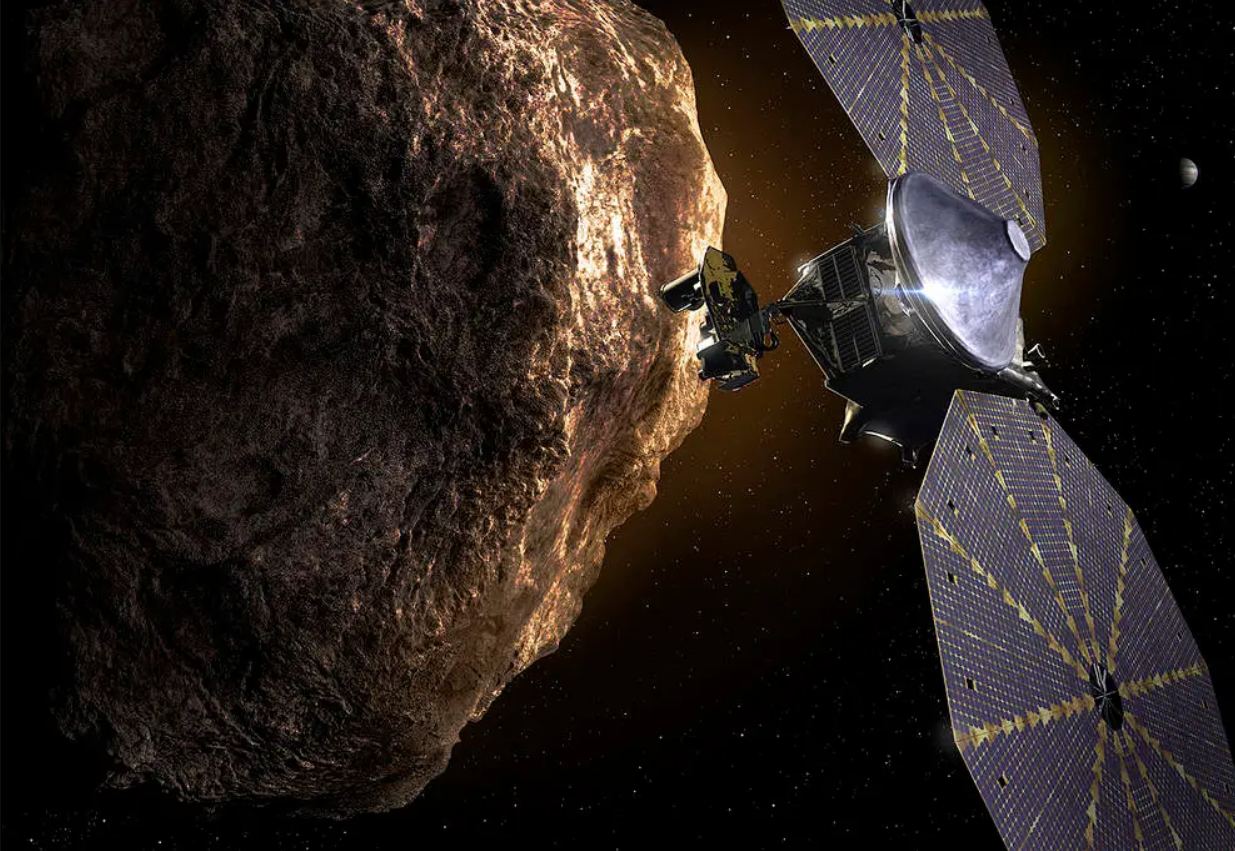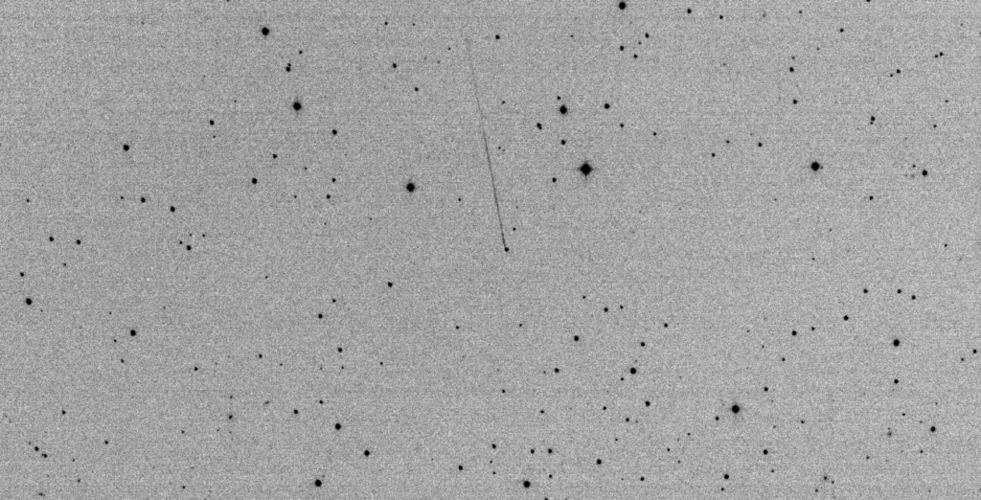For a little over a month now, the Earth has been joined by a new ‘mini-moon.’ The object is an asteroid that has been temporarily accompanying Earth on its journey around the Sun. By 25th November it will have departed but before then, astronomers across the world have been turning their telescopes to study it. A new paper of 2024 PT5 reveals its basaltic nature – similar to volcanic rocks on Earth – with a composition that makes it similar to lunar material. There have been many close encounters to Earth allowing many of its secrets to be unveiled.
Continue reading “Here’s What We Know About Earth’s Temporary Mini-Moon”Astronauts Could Take an Asteroid Ferry from Earth to Mars
This idea really is quite a fascinating one. Currently a trip to Mars would require large amounts of air, water and other resources to sustain human life but would also expose travellers to harmful levels of radiation. A wonderful solution has been proposed in a new paper recently published by researchers from Ukraine. They propose that asteroids which already travel relatively close by Earth, Mars and even Venus already could be used to hop between the planets. They are already making the journey anyway and so perhaps the cosmos already provides the solution to interplanetary travel.
Continue reading “Astronauts Could Take an Asteroid Ferry from Earth to Mars”Good News. Comet Encke Only Threw a Handful of Giant Space Rocks in our Direction

As comets travel along their orbit they dump material along the way. A stream of debris known as the Taurid swarm has been keeping astronomers attention. It’s thought the debris is the remains of comet Encke which has also been fuelling the Taurid meteor shower. The swarm is believed to be composed of mostly harmless, tiny objects but there has been concern that there may be some larger, kilometre size chunks. Thankfully, new observations reveal there are of the order of 9-14 of these 1km rocks.
Continue reading “Good News. Comet Encke Only Threw a Handful of Giant Space Rocks in our Direction”Hera Probe Heads Off to See Aftermath of DART’s Asteroid Impact

The European Space Agency’s Hera spacecraft is on its way to do follow-up observations of Dimorphos, two years after an earlier probe knocked the mini-asteroid into a different orbital path around a bigger space rock.
Scientists say the close-up observations that Hera is due to make millions of miles from Earth, starting in 2026, will help them defend our planet from future threats posed by killer asteroids.
Continue reading “Hera Probe Heads Off to See Aftermath of DART’s Asteroid Impact”Earth Will Have a Tiny New Mini-Moon for a Few Months
The Moon has inspired poets and artists, musicians and playwrights. The sight of our one and only Moon is familiar to anyone that has ever glanced up at the night time (and sometimes day time sky!) Every so often though, our Moon (note the use of capital ‘M’)is joined by a small asteroid that wanders too close. Astronomers have detected an 11-metre wide asteroid that has the snappy name 2024 PT5 and it came within 567,000 kilometres of Earth and will become a temporary satellite from 29 September until 25 November when it will leave our system.
Continue reading “Earth Will Have a Tiny New Mini-Moon for a Few Months”Explaining Different Kinds of Meteor Showers. It’s the Way the Comet Crumbles
The Universe often puts on a good show for us down here on Earth but one of the best spectacles must be a meteor shower. We see them when particles, usually the remains of comets, fall through our atmosphere and cause the atmosphere to glow. We see them as a fast moving streak of light but a new paper has suggested that the meteor showers we see can explain the sizes of the particles that originally formed the comet from where they came.
Continue reading “Explaining Different Kinds of Meteor Showers. It’s the Way the Comet Crumbles”This Binary Asteroid is Messed Up. It’s Probably Earth’s Fault
Space is big, really big! Finding new asteroids which are usually dark against the inky blackness of space is harder than looking for a needle in a cosmic haystack. Back in 1991 an astronomer discovered a kilometre wide asteroid which was subsequently found to have a smaller moon half its size. It was given the snappy name of 1991 VH which , after follow up observations was revealed to have a tumbling, chaotic rotation. This was the first binary asteroid that has been seen to exhibit this behaviour. A paper just published suggests that a close encounter with Earth as recently as 12,000 years ago could have started its tumbling motion.
Continue reading “This Binary Asteroid is Messed Up. It’s Probably Earth’s Fault”A Pair of CubeSats Using Ground Penetrating Radar Could Map The Interior of Near Earth Asteroids

Characterizing near-Earths asteroids (NEAs) is critical if we hope to eventually stop one from hitting us. But so far, missions to do so have been expensive, which is never good for space exploration. So a team led by Patrick Bambach of the Max Planck Institute for Solar System Research in Germany developed a mission concept that utilizes a relatively inexpensive 6U CubeSat (or, more accurately, two of them) to characterize the interior of NEAs that would cost only a fraction of the price of previous missions.
Continue reading “A Pair of CubeSats Using Ground Penetrating Radar Could Map The Interior of Near Earth Asteroids”If We Want to Visit More Asteroids, We Need to Let the Spacecraft Think for Themselves
Missions to asteroids have been on a tear recently. Visits by Rosetta, Osirix-REX, and Hayabusa2 have all visited small bodies and, in some cases, successfully returned samples to the Earth. But as humanity starts reaching out to asteroids, it will run into a significant technical problem – bandwidth. There are tens of thousands of asteroids in our vicinity, some of which could potentially be dangerous. If we launched a mission to collect necessary data about each of them, our interplanetary communication and control infrastructure would be quickly overwhelmed. So why not let our robotic ambassadors do it for themselves – that’s the idea behind a new paper from researchers at the Federal University of São Paulo and Brazil’s National Institute for Space Research.
Continue reading “If We Want to Visit More Asteroids, We Need to Let the Spacecraft Think for Themselves”Another Asteroid Discovered Hours Before it Impacts the Earth
What were you doing last Saturday? As it turns out, I was doing something rather unexciting… Trying to fix my washing machine (I did – in case you are interested). At the same time, Hungarian geography teacher by day and asteroid hunter by night Krisztián Sárneczky was out observing and detected a small asteroid which it transpired was on a collision course with Earth!
Continue reading “Another Asteroid Discovered Hours Before it Impacts the Earth”






